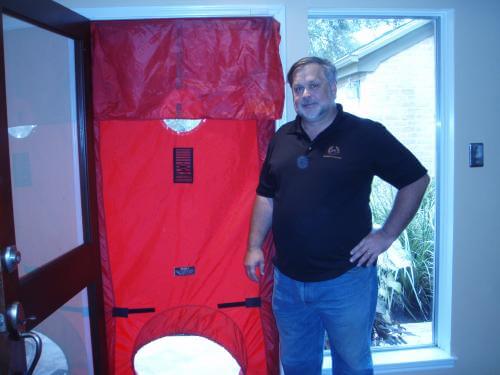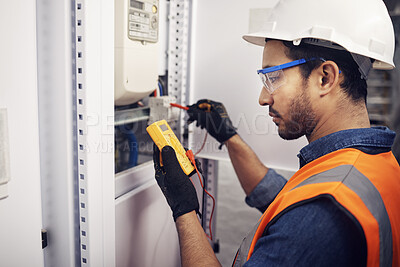Boost health indoors with results from energy testing
Boost health indoors with results from energy testing
Blog Article
The Duty of Power Screening in Attaining an Airtight Solution for Your Building
Power screening is vital for home proprietors seeking to develop an impermeable environment. It recognizes air leaks and ineffectiveness that can endanger power efficiency. Common perpetrators consist of spaces around windows and doors. Using techniques like blower door tests and thermal imaging, property owners can acquire insights right into their home's vulnerabilities (air tight solutions). Comprehending these findings is crucial. What steps should be taken when air leaks are recognized? The responses hold the key to enhanced comfort and financial savings
Recognizing Energy Testing and Its Significance
Energy screening plays a necessary role in evaluating the airtightness of structures and structures. By measuring air leakage, this approach gives important insights right into a building's power efficiency, thermal comfort, and general performance. Airtight buildings reduce energy intake, guaranteeing that heating and air conditioning systems run successfully. This screening process generally entails strategies such as blower door examinations, which produce a controlled setting to determine unintended air pathways.Understanding the value of power testing expands beyond conformity with building codes; it fosters a proactive strategy to sustainability. Recognizing air leakages early can bring about timely removal, inevitably enhancing indoor air top quality and reducing utility expenses. Furthermore, energy screening contributes to the longevity of building materials by decreasing dampness buildup and relevant damage. As recognition of environmental influence rises, power testing comes to be an important device for home owners and building contractors going for high-performance buildings.
Common Resources of Air Leaks in Residence
Identifying usual resources of air leaks is crucial for improving a home's energy effectiveness. These leaks typically occur in various locations of a building, substantially affecting home heating and air conditioning costs. Typical offenders consist of spaces around home windows and doors, where seals might wear away gradually. Furthermore, electrical outlets and switches can produce pathways for air exchange if not appropriately insulated. Cellars and attics are likewise regular resources, particularly where wall surfaces fulfill the structure or the roof. Various other prospective leakage factors include plumbing infiltrations, airing vent systems, and the areas surrounding chimneys. Older properties might endure from broken down structure products, boosting vulnerability to air infiltration. By recognizing these typical sources, property owners can take positive steps to secure leakages, thus enhancing general power performance and comfort within their areas. Addressing these issues is an essential part of establishing an airtight option for any kind of building.
Techniques of Power Testing: Blower Door and Thermal Imaging
Efficient power screening approaches, such as blower door tests and thermal imaging, play a vital duty in detecting air leaks within a property. The blower door test involves depressurizing a building or pressurizing to measure airflow and recognize leaks. An adjusted follower is set up in an outside doorway, and the resulting stress difference highlights locations of undesirable air seepage. This method quantifies the general airtightness of the structure.Thermal imaging matches blower door examinations by visually identifying temperature level variations on surface areas, revealing covert air leaks. Infrared video cameras catch heat loss or gain, enabling precise identification of trouble locations, such as badly shielded walls or voids around doors and windows. energy testing. With each other, these techniques supply a thorough analysis of a residential property's energy effectiveness, allowing homeowner to address air leaks properly and improve general efficiency
Benefits of Identifying Air Leaks
Recognizing air leaks supplies substantial benefits for energy performance and indoor convenience. By sealing these leaks, structures can lower energy consumption, resulting in reduced utility expenses and a lowered carbon impact. Furthermore, boosted airtightness adds to a much more stable interior setting, boosting overall convenience for passengers.
Power Efficiency Improvements
Spotting air leakages is necessary for boosting energy performance in buildings. Determining these leakages permits homeowner to attend to areas where conditioned air runs away or unconditioned air goes into, causing considerable energy savings. By securing cracks and spaces, buildings can maintain a constant temperature, lowering the demand on home heating and cooling down systems. This not just decreases power expenses yet also decreases the ecological influence related to raised power consumption. Additionally, power efficiency improvements add to a structure's general sustainability, making it a much more attractive option for eco-conscious purchasers or renters. Eventually, prioritizing air leakage detection and remediation helps enhance power use, advertises accountable source administration, and supports lasting economic advantages for residential or commercial property owners.

Improved Indoor Comfort
Resolving air leaks not just causes energy financial savings however also significantly improves indoor comfort. When air leaks are successfully recognized and secured, find more temperature level regulation within a building ends up being more reliable. This causes constant interior temperatures, eliminating cool drafts in wintertime and hot areas in summer season. Improved insulation likewise decreases environmental pollution from outside, developing a quieter and more tranquil living environment. Additionally, improved air quality is achieved by reducing the infiltration of outdoor contaminants, irritants, and moisture, adding to the general wellness of residents. As a result, homeowners experience an even more enjoyable ambience, promoting relaxation and productivity. Eventually, correcting and identifying air leaks is crucial for accomplishing suitable interior comfort throughout the year.
Exactly How Power Screening Improves Comfort and Indoor Air High Quality
Power screening plays an important role in enhancing temperature level law within interior areas, making sure a constant and comfortable environment. By sealing and identifying air leaks, it likewise greatly lowers the seepage of pollutants, thus boosting interior air high quality. This twin effect cultivates overall wellness for owners.
Boosted Temperature Guideline
Reliable temperature level guideline significantly contributes to both comfort and interior air high quality, making it a critical focus for modern building design. Energy screening plays an important role in accomplishing this policy by recognizing areas where heat loss or gain happens, enabling targeted renovations. By making certain an airtight structure envelope, power screening aids keep regular indoor temperature levels, lowering the demand for too much home heating or air conditioning. This stability improves owner comfort, as fluctuations in temperature level can bring about pain and discontentment. Additionally, effective temperature control can boost indoor air quality by decreasing the risk of condensation and mold and mildew development, which prosper in irregular temperature problems. Energy testing is vital for enhancing temperature level monitoring in commercial and residential buildings.
Decreased Contaminant Seepage
While several aspects add to indoor air top quality, reduced toxin seepage sticks out as a vital facet that energy testing can substantially improve. Power testing identifies air leakages and weak factors in a structure's envelope, which may permit outside pollutants, irritants, and moisture to get in indoor areas. By sealing these leaks, residential or commercial properties can efficiently limit airborne pollutants, bring about a much healthier environment. Boosted airtightness not only boosts comfort yet additionally minimizes the burden on heating and cooling down systems, causing energy savings. In addition, reduced contaminant infiltration promotes much better overall wellness for residents, as cleaner air advertises respiratory health and wellness and decreases allergy symptoms. Energy screening plays an essential role in creating both a health-conscious and energy-efficient living space.
The Financial Effect of Power Testing on Utility Costs

Steps to Take After Power Screening Results
Once power testing outcomes remain in, house owners need to meticulously review the findings to establish one of the most efficient path forward. The initial step involves recognizing the areas that require renovation, such as air leaks or insulation deficiencies. House owners ought to after that focus on repairs based upon the severity of the problems and their prospective effect on power efficiency.Next, it is suggested to talk to professionals that concentrate on power performance to devise a comprehensive activity plan. This may include services like securing voids, including insulation, or upgrading home windows and doors.After carrying out the needed modifications, a follow-up power examination can figure out the performance of the repair services. Continual monitoring is additionally vital to assure that the home preserves its impermeable standing gradually. By following these steps, home owners can significantly improve their building's energy performance, resulting in reduced energy costs and improved comfort.
Frequently Asked Questions
How Commonly Should I Conduct Power Evaluating on My Residential or commercial property?
The regularity of energy screening ought to usually be every couple of years, or following significant renovations. Normal evaluations assist identify effectiveness renovations and assure that the residential property maintains optimal energy efficiency gradually, adapting to transforming problems.
Is Energy Testing Necessary for New Constructions?
Energy screening is necessary for brand-new constructions, as it recognizes potential air leakage and insulation concerns - air tight solutions. Applying these tests warranties power efficiency, enhances interior comfort, and satisfies building ordinance, ultimately resulting in lasting cost financial savings
Can I Perform Energy Screening Myself?
Energy testing normally needs specific equipment and expertise. While some property owners might attempt fundamental evaluations, professional solutions guarantee accurate results and effective identification of issues, inevitably causing far better energy efficiency and convenience in living areas.
What Is the Cost of Expert Power Screening Services?
The cost of specialist power screening services normally ranges from $300 to $1,500, depending on residential or commercial property complexity, place, and size. House owners ought to consider potential power cost savings when reviewing the financial investment in these services.
For How Long Do Energy Screening Results Commonly Last?
Power screening results typically stay valid for one to three years, depending upon factors like building alterations and ecological changes. Routine updates are recommended to assure precision and keep reliable energy effectiveness requirements. Reliable power testing approaches, such as blower door examinations and thermal imaging, play a crucial duty in diagnosing air leakages within a home. Recognizing these leaks allows residential property proprietors to attend to locations where conditioned air gets away or unconditioned air enters, leading to home substantial energy savings. Power screening determines air leaks and weak points in a building's envelope, which may allow outdoor pollutants, irritants, and moisture to get in indoor rooms. As property owners significantly seek to minimize their energy costs, the function of power screening ends up being important in determining leakages and inefficiencies. Home owners should after that prioritize fixings based on the extent of the concerns and their prospective impact on power efficiency.Next, it is a good idea to consult with specialists who specialize in energy efficiency to create a comprehensive activity plan.
Report this page